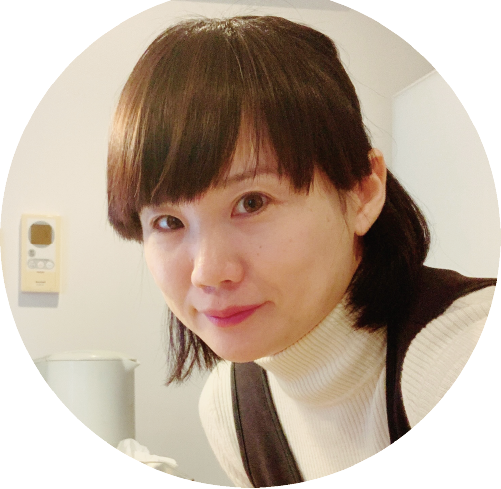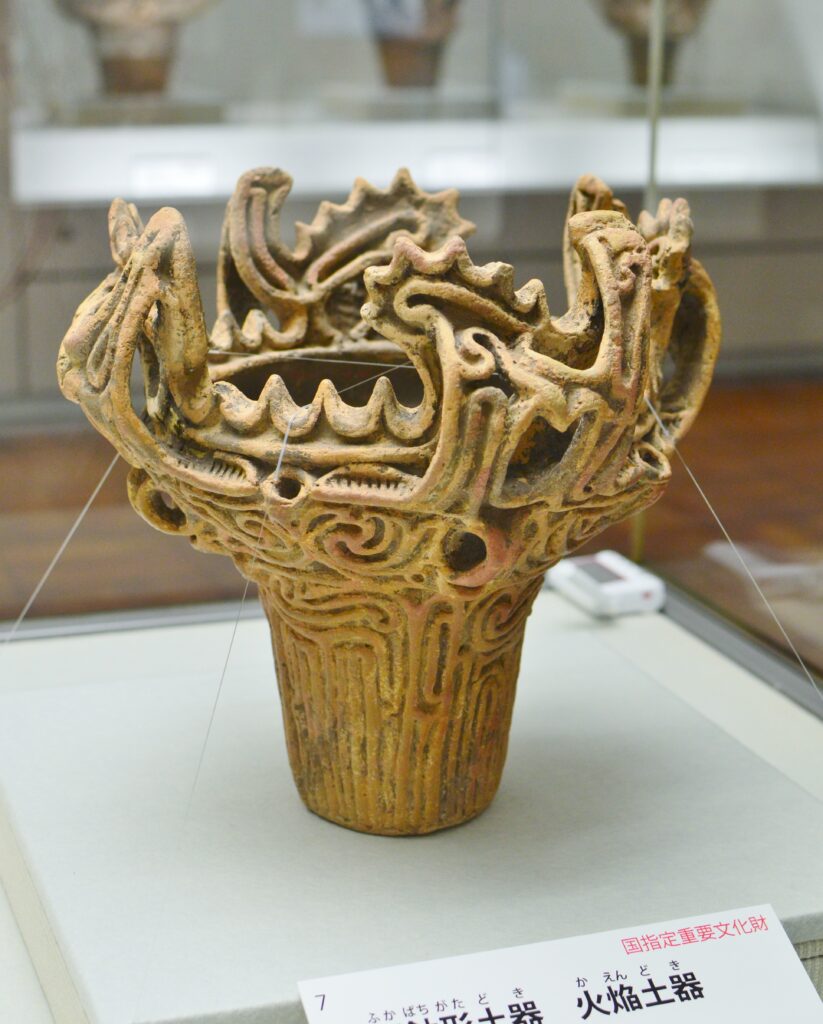L’âme des pottery 土器のたましい

縄文時代といえばやっぱり土器!今回は土器について調べてみよう
Listen on podcast〜ポッドキャストで聞く
縄文時代といえば土器。
Today’s quiz
No.1 What are the characteristic features of Jomon period pottery?
No.2 What were the uses of Jōmon pottery?
No.3 What is the name of a famous type of pottery from the Middle Jomon period?
English
The Jōmon period, a prehistoric era in Japan that lasted for more than ten thousand years approximately between 15,000 and 2,400 BCE, is eponymous with the style of pottery that was a defining feature of the period. Jōmon is a Japanese word meaning “cord-marked,” and as the name suggests, Jōmon pottery is distinguished by its unique cord-mark patterns. The pottery was used not only in daily life but also for social and religious ceremonies. For instance, it is said that the corpses of small children were buried in Jōmon vessels.
Jōmon pottery pieces were formed by coiling, which involved kneading clay into long strips and coiling the strips one on top of another while smoothing out the joints between them. The resulting pieces, having been decorated, then underwenta simple low-temperature firing process in an open fire. Because of this method of production, Jōmon pottery is generally thick-walled and fragile.
Archaeologists divide the Jōmon period into six stages, during which the style of the pottery (such as its patterning, thickness, and color) changed. There were pieces without cord marks and others decorated with seashells. The color ranged from blackish- to reddish-brown, depending on the type of clay used and the firing conditions.
These pottery pieces reflect not only the lifestyle of the Jōmon people but also the development of their artistic sensibilities and technological skills. Among the pieces, the flame-style pottery made during the middle Jōmon period, the complex shape of which resembles leaping flames, is still highly regarded for its artistic quality.
The emergence of Jōmon pottery led to such cooking techniques as boiling, making it possible to leach toxins from horse chestnuts and acorns and facilitated the storage of foodstuffs. It allowed a broader range of foods to be consumed, bringing significant stability to people’s diets. It is said that this improvement in diet contributed to the Jōmon people enjoying longer lifespans.
Thus, Jōmon pottery can be considered a crucial element when discussing the Jōmon period.
Japanese
およそ紀元前1万5千年から紀元前2,400年頃まで、1万年以上続いた日本の先史時代、縄文時代を象徴するのは縄文土器です。縄文土器は、その時代の名前の由来にもなっています。縄文というのは日本語で「縄でつけた模様」を意味していて、この名前の通り、縄文土器の特徴は、縄の跡でつけられた模様があることです。この土器は日常生活に使用されただけでなく、社会的、そして、宗教的な儀式にも使用されていました。例えば、小さな子供が亡くなると、その亡骸を土器に入れて埋葬する習慣があったと伝えられています。
縄文土器は、粘土をこねて細長い帯状にし、丸くつみ重ねていき、その継ぎ目をなめらかにするという方式で形成されました。
そして装飾が施されたあとに、 直火で低温で焼かれました。このような製法のため、縄文土器は一般に厚手で壊れやすかったようです。
考古学者たちは土器の様式(文様、厚さ、色など)の違いにより、縄文時代を6つの時代に区分しました。縄の跡がないものもあれば、貝殻で模様をつけたものもありました。色は使用された土の種類や焼成条件によって異なり、黒っぽいものから赤褐色のものにまで及びました。
(日本語で焼成、しょうせい 窯業などで,製品を炉で加熱したり,熱風にさらしたりすること。)
これらの土器は、縄文人の生活様式だけでなく、芸術的な感性と技術力の発展も反映しています。なかでも縄文時代中期の火焔型土器は、燃え上がる炎の躍動感を思わせる複雑な形が特徴で、その芸術性は現在でも高く評価されています。
縄文土器が登場したことで、煮るという調理技術によりトチノミやどんぐりのアク抜きや、食品が保存しやすくなりました。これにより食の幅が広がり、食生活は大きく安定しました。この食生活の改善により縄文人の寿命が伸びたとも言われています。
このように、縄文土器は縄文時代を語る上で欠かせない要素のひとつなのです。
Vocabulary
eponymous 名を冠した
knead こねる
undergo 経験する
thick-walled 厚みのある
leap 跳ねる
leach アクを抜
horse chestnut ときのき
縄文土器を実際に作っているYouTuber、週末縄文人
火焔土器
wikipediaのページから画像を引用しています

番組への感想、ツッコミなどなどお便りはこちらから。
